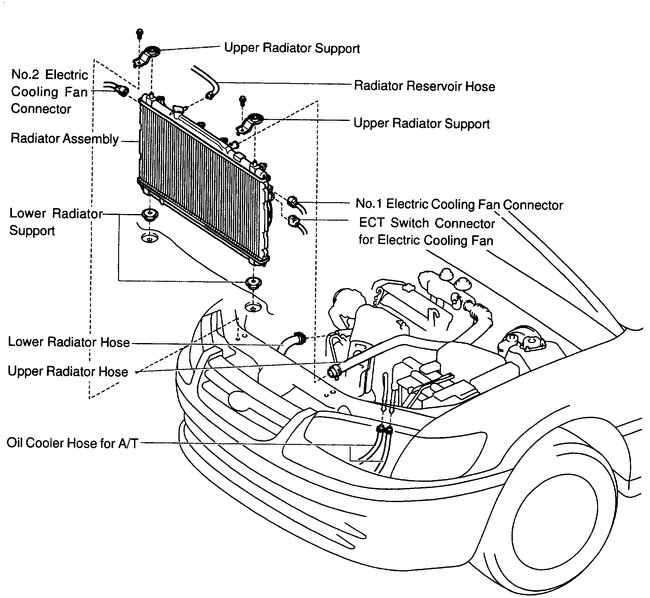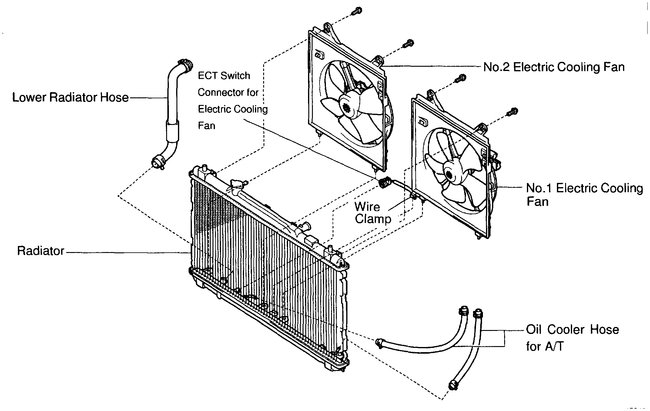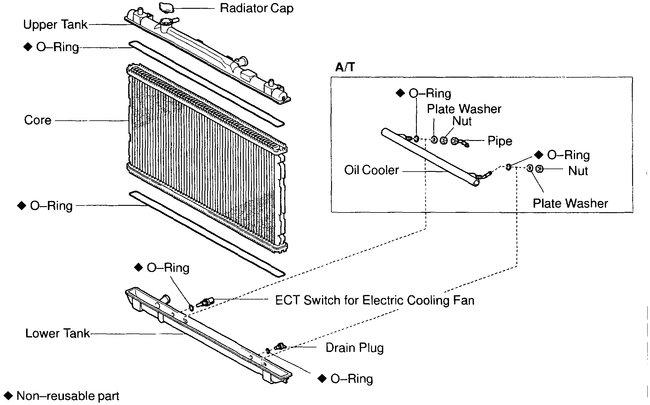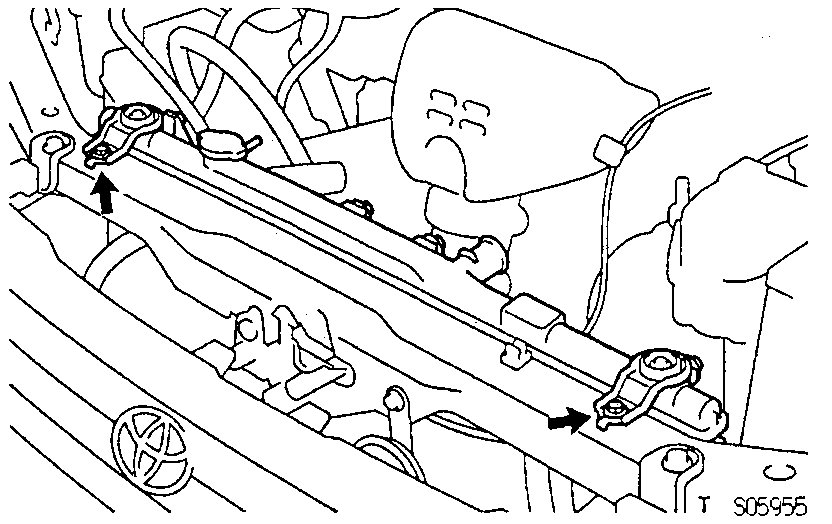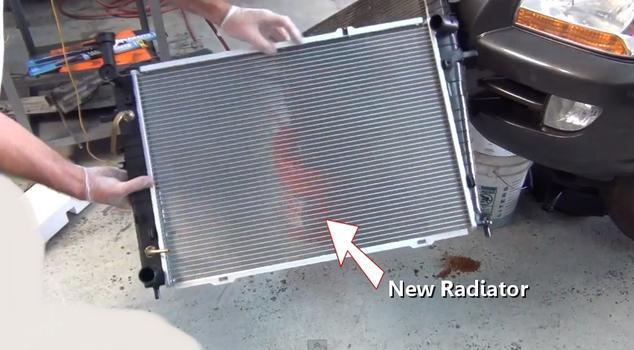- noticed a fan (driver side) was loose. Motor axle stuck, overheated, melted the interior of the fan until the fan fell off. Fuse was blown. Replaced the fan, replaced the fuse. To test I a) turned on the AC - they both go and b) unplugged the radiator sensor: they both went full speed. Thus relays+fuses and motors and radiator temp sensor work.
- then noticed a small crack on the radiator plastic top side, horizontally, right along the angle. It was looking as a wear or an old crack. Started steaming but not too much. It seems it has been there because all that pressure and heat (I thought it was because fan was dead). Started to lose just a little bit of coolant through evaporation. Ordered one new from rockauto, changed it. I did not checked for the flow though, it was brand new.
Current situation:
- there is no coolant circulation, there's no fans kicking in. Bottom left hose is cold; upper right hose is hot as hell, plastic part of radiator as well. Half of radiator is cold, the other one is hot. New radiator, I mention this again.
- changed the thermostat, the older one looks alright. No change.
- a friend started the motor and turned on the heat full blast; motor started to heat, temp gauge inside was rising (thus motor temp sensor working fine), went to the red area, fans not kicking in. Upper hose not having at all liquid, full of air. Test: removed the cap, squeeze both hoses, saw how the coolant go up and down.
- I never saw temperature gauge rising before the heat test above. If I run the car for thirty minutes to an hour (I did not drive it more) I never see the temperature gauge going up, it is always in the middle. Motor is not heating up. But the radiator does. A few days ago I noticed some liquid in the upper hose. Still hot, the other one still cold. Really cold.
Best short description:
- fans and coolant circulation not kicking in when they should, though everything looks okay; only thing that I did not checked is the water pump.
Beliefs:
- I think the fan melting it's not related.
- There is no leaks of coolant anywhere (near the water pump, for example), so I feel the pump is okay - replacing it will require taking off the timing belt.
- I am driving the car around; it is just a matter of time until this cheap after-market radiator will crack at the plastic part because of the pressure and heat.
Suggestions?
Sunday, October 28th, 2018 AT 2:03 PM
